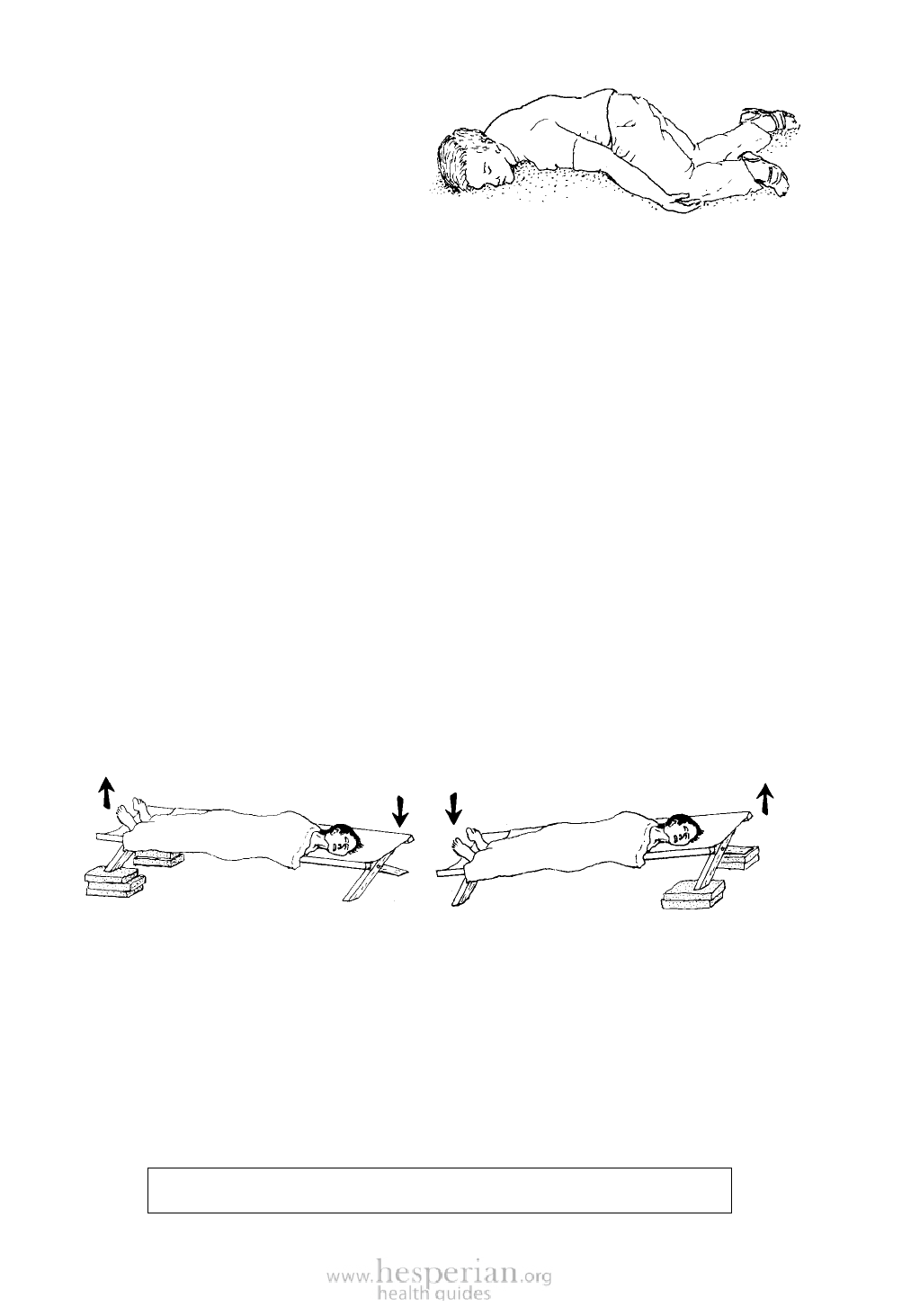
78 Where There Is No Doctor 2011
LOSS OF CONSCIOUSNESS
Common causes of loss of
consciousness are:
• drunkenness
• a hit on the head
(getting knocked out)
• fainting (from fright, weakness,
low blood sugar, etc.)
• shock (p. 77)
• heat stroke (p. 81)
• seizures (p. 178)
• stroke (p. 327)
• poisoning (p. 103)
• heart attack (p. 325)
If a person is unconscious and you do not know why, immediately check each of
the following:
1. Is he breathing well? If not, tilt his head way back and pull the jaw and tongue
forward. If something is stuck in his throat, pull it out. If he is not breathing, use
mouth-to-mouth breathing at once (see p. 80).
2. Is he losing a lot of blood? If so, control the bleeding (see p. 82).
3. Is he in shock (moist, pale skin; weak, rapid pulse)? If so, lay him with his head
lower than his feet and loosen his clothing (see p. 77).
4. Could it be heat stroke (no sweat, high fever, hot, red skin)? If so, shade him
from the sun, keep his head higher than his feet, and soak him with cold water (ice
water if possible) and fan him (see p. 81).
How to position an unconscious person:
very pale skin:
(shock, fainting, etc.)
red or normal skin:
(heat stroke, stroke, heart problems, head injury)
If there is any chance that the unconscious person is badly injured:
It is best not to move him until he becomes conscious. If you have to move him, do
so with great care, because if his neck or back is broken, any change of position may
cause greater injury (see p. 100).
Look for wounds or broken bones, but move the person as little as possible. Do not
bend his back or neck.
Never give anything by mouth to a person who is unconscious.